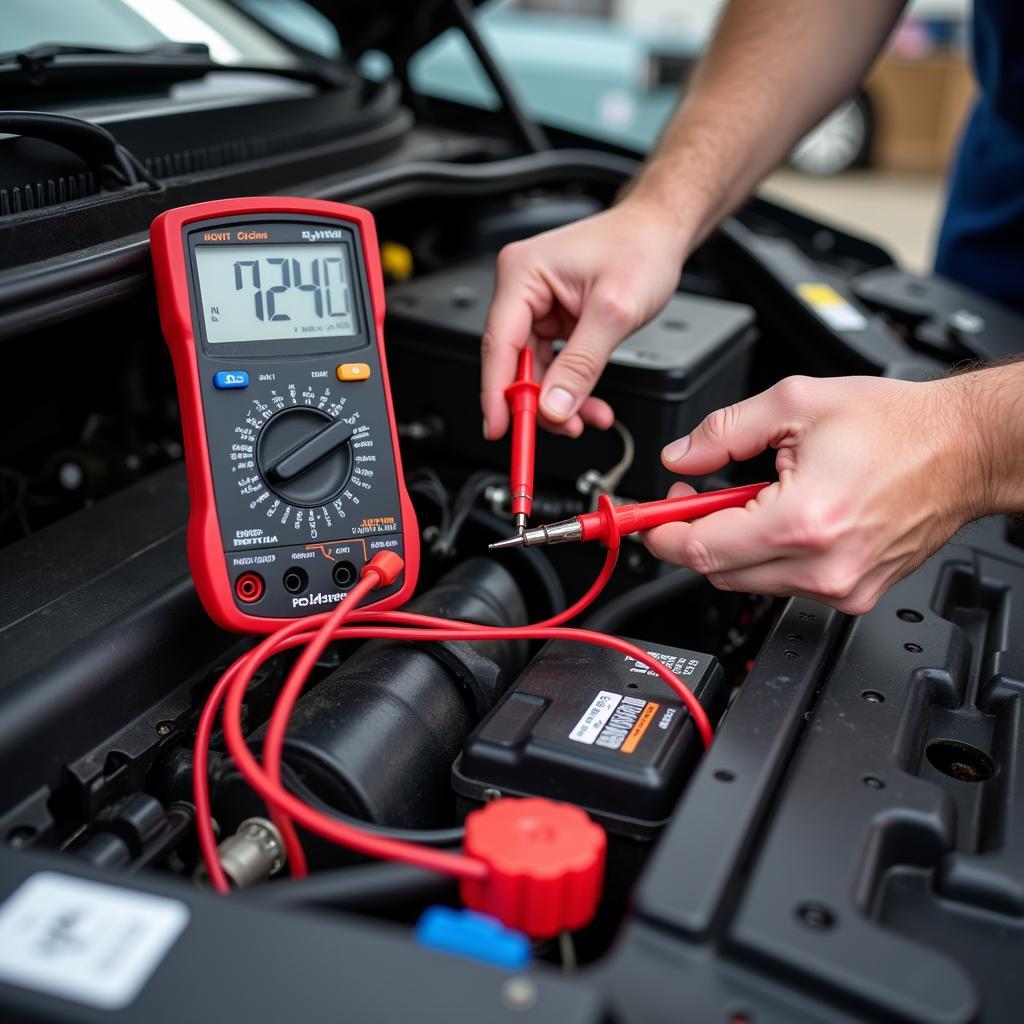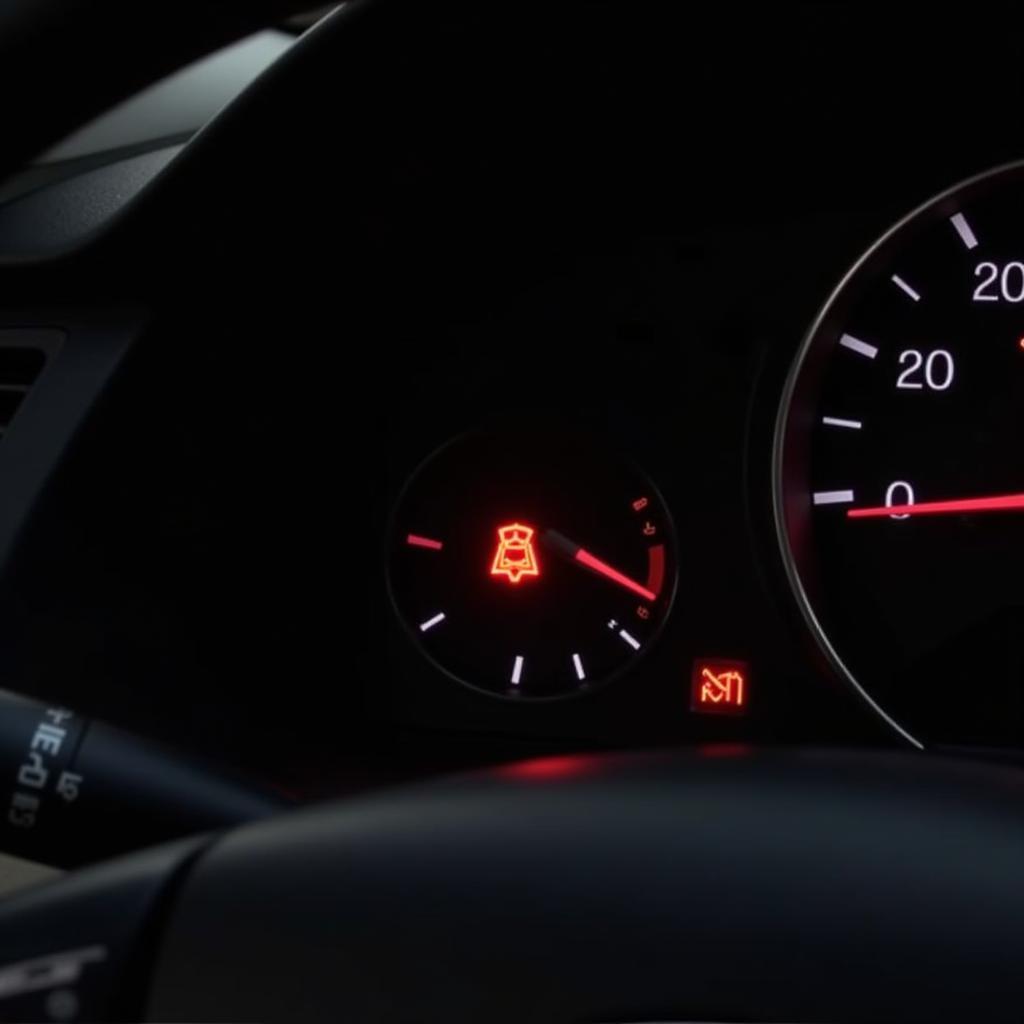A dead car battery is frustrating, especially when you’re in a hurry. Whether your car battery is completely dead or just keeps going flat, this comprehensive guide will help you diagnose the problem, find solutions, and prevent it from happening again. We’ll cover everything from simple checks to more advanced diagnostic techniques, ensuring you can get back on the road quickly.
Common Causes of a Car Battery Going Flat
There are several reasons why your car battery might be draining. Some are easy to fix, while others require a professional touch.
Parasitic Drain: The Silent Killer
A parasitic drain occurs when something in your car continues to draw power even after the ignition is off. This can be anything from a faulty interior light to a malfunctioning radio.
- Forgotten Lights: Leaving interior lights, headlights, or even the glove box light on can drain your battery overnight.
- Faulty Wiring: Damaged or corroded wiring can create a short circuit, constantly drawing power.
- Malfunctioning Electronics: A faulty radio, alarm system, or even a clock can contribute to a parasitic drain.
Old Age: Batteries Don’t Last Forever
Like any other component, car batteries have a limited lifespan. Typically, they last between three and five years. As a battery ages, its ability to hold a charge diminishes, eventually leading to a flat battery.
Extreme Temperatures: Both Hot and Cold Can Be Culprits
Extreme temperatures, both hot and cold, can affect a car battery’s performance. Heat can accelerate the chemical reactions within the battery, shortening its lifespan. Cold temperatures can slow down these reactions, making it harder for the battery to provide enough power to start the engine.
Alternator Issues: Not Charging Properly
The alternator is responsible for recharging the battery while the engine is running. If the alternator is faulty, it won’t charge the battery properly, eventually leading to a flat battery.
Diagnosing a Car Battery Problem
Before you replace your battery, it’s important to diagnose the problem correctly. Here are some steps you can take:
- Check the Battery Terminals: Look for corrosion or loose connections. Clean the terminals with a wire brush and baking soda solution. Tighten the connections securely.
- Test the Battery Voltage: Use a multimeter to test the battery voltage. A fully charged battery should read around 12.6 volts.
- Test the Alternator Output: With the engine running, the alternator should output around 14 volts.
- Check for Parasitic Drain: Use a multimeter to measure the current draw with the ignition off. A drain of more than 50 milliamps could indicate a parasitic drain.
 Testing for parasitic drain with a multimeter
Testing for parasitic drain with a multimeter
Solutions for a Car Battery Going Flat
Once you’ve diagnosed the problem, you can take the appropriate steps to fix it.
Jump Starting Your Car
If your battery is completely dead, you can jump-start it using jumper cables and another vehicle or a portable jump starter.
Replacing Your Car Battery
If your battery is old or damaged, it’s time for a replacement. Make sure to choose the correct battery type and size for your vehicle.
Addressing Alternator Issues
If your alternator is faulty, it needs to be repaired or replaced by a qualified mechanic.
Fixing a Parasitic Drain
Identifying and fixing a parasitic drain can be tricky. It often involves systematically checking fuses and disconnecting components to isolate the source of the drain.
Preventing Future Battery Problems
- Regularly Clean Your Battery Terminals: This prevents corrosion and ensures a good connection.
- Turn Off All Lights and Accessories: Double-check that everything is off before leaving your car.
- Have Your Battery Tested Regularly: A simple test can identify potential problems before they leave you stranded.
- Park in a Garage: Protecting your car from extreme temperatures can extend the life of your battery.
“A well-maintained battery is crucial for reliable starting and overall vehicle performance,” says John Smith, a seasoned automotive electrical engineer. “Taking preventative measures can save you time, money, and frustration in the long run.”
Conclusion
A car battery going flat can be a nuisance, but with the right knowledge and tools, you can diagnose and fix the problem. By understanding the common causes and taking preventative measures, you can keep your car battery healthy and avoid future headaches. Remember to regularly check your battery and address any issues promptly to ensure reliable starting and optimal vehicle performance.
FAQs
- How long does a car battery last? Typically, car batteries last between three and five years.
- What are the signs of a bad alternator? Dim headlights, flickering interior lights, and a whining noise from the engine compartment can indicate a bad alternator.
- Can I jump-start my car with a portable jump starter? Yes, portable jump starters are a convenient way to jump-start a car without needing another vehicle.
- How can I test for a parasitic drain? Use a multimeter to measure the current draw with the ignition off.
- What should I do if my car battery keeps going flat? Have your car inspected by a qualified mechanic to diagnose and fix the underlying problem.
- Is it safe to drive with a bad alternator? Driving with a bad alternator can eventually drain your battery and leave you stranded.
- How often should I clean my car battery terminals? Cleaning your battery terminals every few months is recommended.


